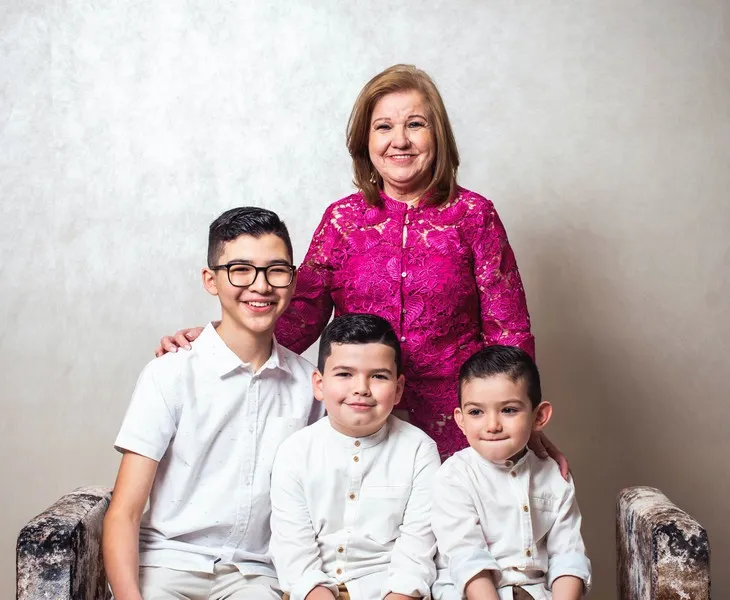Table of Contents
- Understanding Group Marriage
- Sociological Theories on Group Marriage
- Dynamics of Group Marriage
- Modern Perspectives on Group Marriage
- The Future of Group Marriage
- Conclusion
Group marriage, a non-monogamous form of marital relationship involving multiple partners, is a fascinating and complex social arrangement that challenges conventional notions of family and partnership. While rare compared to monogamy and polygamy, group marriage has existed historically and persists in some contemporary societies. This article explores group marriage from a sociological perspective, examining its origins, dynamics, benefits, challenges, and implications for broader social structures.
Understanding Group Marriage
Defining Group Marriage
Group marriage refers to a marital system where multiple individuals, typically more than two, form a committed and consensual partnership. Unlike polygamy, which often involves one individual with multiple spouses, group marriage creates a web of interconnected relationships among all members. This arrangement can include both heterosexual and same-sex partnerships, and members may share responsibilities such as child-rearing, financial management, and emotional support.
Group marriage is often seen as a radical departure from traditional family structures, offering an alternative that emphasizes shared responsibility and collective well-being. In contrast to monogamous partnerships, where roles and responsibilities are often divided between two people, group marriages allow for greater diversity and flexibility in addressing the needs of the family unit. Members may take on complementary roles, with some focusing on economic contributions, others on caregiving, and others on maintaining the emotional dynamics of the group.
Historical Context
Group marriage has appeared sporadically throughout history, often in specific cultural or economic contexts. Anthropologists have documented group marriage practices in certain indigenous societies, where resource sharing and communal living were integral to survival. For instance, some small-scale societies in the Pacific Islands and parts of Africa practiced forms of group marriage as a means of ensuring collective stability and security. These arrangements were often influenced by environmental factors, such as the need to pool resources in challenging climates or to maintain social cohesion in isolated communities.
In modern times, group marriage is most commonly associated with intentional communities, alternative subcultures, and some religious or ideological movements. Communes and collective living arrangements that emerged during the 20th century, particularly during the countercultural movements of the 1960s and 1970s, often experimented with group marriage as a way to challenge societal norms and promote egalitarian values. While it remains a marginal practice, its persistence highlights the adaptability of human relationships and the diversity of family structures.
Sociological Theories on Group Marriage
Structural Functionalism
From a structural functionalist perspective, group marriage can be seen as a social arrangement that fulfills essential functions for its members. By pooling resources and dividing labor, group marriages can provide economic stability and reduce the pressures of parenting and domestic responsibilities. The collective nature of group marriage may also foster stronger social bonds and a sense of community, which are critical for societal cohesion.
Moreover, group marriage can act as a stabilizing force in societies undergoing rapid change or facing economic uncertainty. By promoting collective responsibility and resource sharing, group marriages can mitigate the impact of economic crises and provide a safety net for members. This adaptability underscores the potential of group marriage as a resilient social structure capable of addressing modern challenges.
Symbolic Interactionism
Symbolic interactionists emphasize the meaning-making processes within group marriages. Members negotiate their roles, boundaries, and expectations through ongoing communication and shared understandings. The fluid and dynamic nature of these relationships challenges traditional norms, requiring participants to continually redefine their identities and interactions within the group.
This theoretical lens also highlights the importance of rituals and symbols in maintaining group cohesion. Shared traditions, such as communal meals or collective decision-making processes, can reinforce the bonds between members and provide a sense of belonging. Understanding these symbolic practices offers valuable insights into the mechanisms that sustain group marriages over time.
Conflict Theory
Conflict theorists might analyze group marriage as a reaction against dominant societal structures, such as capitalism and patriarchy. By rejecting traditional monogamous marriage, group marriage can be interpreted as a form of resistance to the commodification of relationships and the concentration of power within nuclear families. However, internal power dynamics and potential conflicts within group marriages also merit critical examination.
Power struggles within group marriages can arise from disparities in economic contributions, emotional investment, or decision-making authority. Conflict theory encourages a critical examination of these dynamics, emphasizing the need for equitable practices and mechanisms to address grievances. This perspective also highlights the broader social implications of group marriage, including its potential to challenge entrenched hierarchies and promote more inclusive family models.
Dynamics of Group Marriage
Relationship Structures
Group marriages can vary widely in structure, depending on the preferences and agreements of the participants. Some arrangements may involve equal partnerships among all members, while others may have more hierarchical dynamics. Communication and consent are fundamental to maintaining harmony and addressing challenges within these complex networks.
The diversity of relationship structures in group marriages reflects the flexibility of this arrangement. For example, some group marriages may prioritize egalitarian principles, with all members sharing responsibilities and decision-making equally. Others may adopt a more pragmatic approach, assigning specific roles based on individual strengths and preferences. This adaptability allows group marriages to cater to the unique needs and aspirations of their members.
Parenting and Child-Rearing
One notable aspect of group marriage is its impact on parenting. Children in group marriages may benefit from multiple caregivers, providing diverse perspectives, skills, and emotional support. This arrangement can also distribute the responsibilities of child-rearing more equitably, reducing stress on individual parents. However, it may also raise questions about legal rights, custody, and societal acceptance.
The presence of multiple caregivers can enrich a child’s upbringing, offering a broader range of role models and experiences. Children in group marriages may develop strong interpersonal skills and adaptability, as they learn to navigate complex social dynamics. However, these benefits are contingent on the group’s ability to maintain a stable and supportive environment, emphasizing the importance of effective communication and conflict resolution.
Challenges and Conflict Resolution
Despite its potential benefits, group marriage is not without challenges. Jealousy, power imbalances, and communication breakdowns can arise, just as in any intimate relationship. Effective conflict resolution strategies, such as mediation and open dialogue, are crucial for sustaining healthy group marriages. Participants must navigate societal stigma and legal ambiguities, which can add to the emotional and logistical burdens of maintaining such a relationship.
Conflict resolution in group marriages often requires innovative approaches, such as consensus-based decision-making or facilitated discussions. These methods can help address underlying issues and promote mutual understanding, fostering a sense of unity and shared purpose. Additionally, support networks and counseling services tailored to non-traditional relationships can play a vital role in helping group marriages thrive.
Modern Perspectives on Group Marriage
Get the full article AD FREE. Join now for full access to all premium articles.
View Plans & Subscribe Already a member? Log in.





